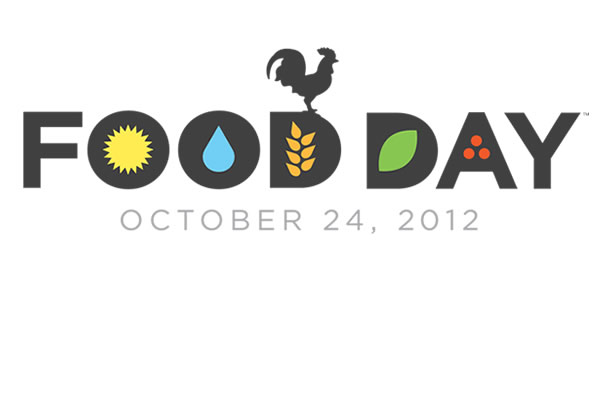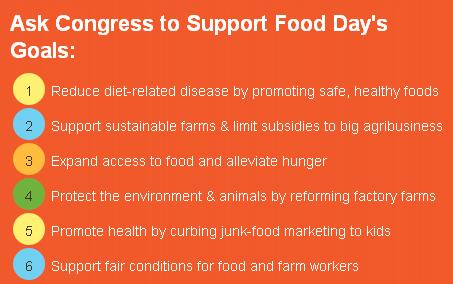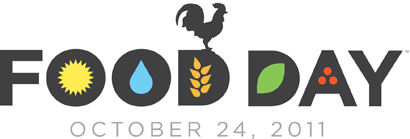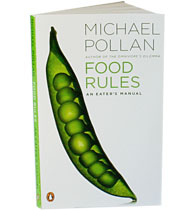 Oct 24, 2012 Food Day 2012! On Twitter, follow #FoodDayConf with great tips on label lingo, decoding kids aisle food claims.
Oct 24, 2012 Food Day 2012! On Twitter, follow #FoodDayConf with great tips on label lingo, decoding kids aisle food claims.
In honor of the day, I’m reprising “Food for Thought: Media to Digest for Healthier Kids” and inviting ALL to continue the conversation on Oct 30 in SF at the Fast Forward Health Film Fest chock full of Bay Area health innovation pros. I’ll be there and hope you will too!
Here’s the full line-up of films and luminaries at Fast Forward Health.org and you can find out who else is coming on the Fast Forward Health Facebook page, including Dr. Lisa Ganjhu from Super Size Me!
For the cost of a fancy latte it will be an evening of food, fun and film sure to serve up some convos on sustainable eating, GMOs and why it all matters to families and the planet. $5 Tix here For more on sustainable eating, food security, and why it all matters to families and to our planet, celebrate Food Day 2012 and check out my reprise of tips and resource roundups after the jump!
Oct 24, 2011 Food Day.org marks the first of its kind mass participation fun fest sharing collective knowledge about healthier, sustainable choices to “eat real” scaled through social media…
Wait, WHY do we need a national celebration to get Americans to ditch processed chem cuisine, pouch packs, Frankenfoods and tube feeding to enjoy fresh, identifiable, REAL food? For starters, some kids I work with don’t even know what real food IS, much less what it looks like or where it comes from in its natural state tracing it backwards to its origins. Seriously. I’ve had to explain a blackberry before. (no, not the device)
As one often caught in the crossfire of dialog about kids’ food marketing, public health, eating disorders and media’s role in serving up myriad mixed messages, I thought about all of the colorful nanny state accusations and “personal rights” trolls I’d once again encounter tackling the bipolar policies of our nation’s messaging to families about food. I’ll get the FAQ myths out of the way so you can learn all about Food Day:
“I don’t need any finger-wagging salad munchers scolding me about junk food” —no worries, not happening.
“Everyone already knows what they should eat, they just don’t”—well, with the latest (and constantly changing) nutrition rating/food labels confusing consumers to the tune of 17,000 new “edible foodlike substances” on store shelves each year, even those TRYING to ‘eat real’ have a hard time making sense of the mumbo jumbo.
“No one wants food police body shaming folks to feel bad about themselves.” Not remotely close to the 6 core Food Day principles/goals put forth for life-changing, pleasurably joyful food practices…
As Food Day sponsor (CSPI) imparts, it’s all about connecting the dots between the choices we make, the foods we grow, the policies we form, and the impact we have.
This handy graphic serves as an at-a-glance glimpse of the goals and diverse benefits of supporting Food Day practices for a healthier planet for us ALL.
 I like to think of the Food Day movement as hitting the ‘rewind’ button back to the days of great grandmas (or maybe add an extra great or two depending on your age) when GMO backlash (genetically modified foods) factory-farming and food safety issues weren’t the focal point and families ate REAL food at REAL tables without all the falderal of trying to figure out if the stuff you’re putting in your gullet is fouling up the works from hormones, supplements, vitamins, minerals and umpteen food claims of low-fat, nonfat, light and the like.
I like to think of the Food Day movement as hitting the ‘rewind’ button back to the days of great grandmas (or maybe add an extra great or two depending on your age) when GMO backlash (genetically modified foods) factory-farming and food safety issues weren’t the focal point and families ate REAL food at REAL tables without all the falderal of trying to figure out if the stuff you’re putting in your gullet is fouling up the works from hormones, supplements, vitamins, minerals and umpteen food claims of low-fat, nonfat, light and the like.
The very fact that food science techno terms like free radicals, antioxidants, Omega3s, fatty acids, nutrient balance, energy dense and such even ENTER food chatter is a hint that we might all want to rewind the marketing mental relay that’s on a hazy loop in our brains and instead get back to basics.
What are we supposed to eat that’s fresh, convenient, affordable, and doesn’t take forever and a day to prepare?
Author Michael Pollan of Ominvore’s Dilemma, In Defense of Food, and the handy little ditty called “Food Rules” that I use a lot in my work, summed his over-arching message quite nicely in 7 words…
“Eat food. Not too much. Mostly plants.”
The End. There. Those are the Food Rules. Kidding.
Michael Pollan DOES distill the ‘whys’ of food science gobbledygook into easy to nosh data nuggets that little kids can digest and parents can instill, so I’ve decided for my Food Day post, I’m going to recap some of my favorite adages from his book to help parents simplify rather than complicate in teaching healthy habits.
 Most preschool teachers have “eat your colors” or “eat a rainbow” down pat for fruit and veggies (Pollan’s rule # 25) but aside from the ol’ dancing raisins of yesteryear I think Pollan’s rule #11, about dodging food ads on TV is also high up there in the sound practices approach.
Most preschool teachers have “eat your colors” or “eat a rainbow” down pat for fruit and veggies (Pollan’s rule # 25) but aside from the ol’ dancing raisins of yesteryear I think Pollan’s rule #11, about dodging food ads on TV is also high up there in the sound practices approach.
After all, “More than 2/3 of food advertising is spent promoting processed foods (and alcohol)” Pollan writes, “so if you avoid products with big ad budgets, you’ll automatically be avoiding edible foodlike substances.”
Now THAT is smart and sensible. (not to be confused with big food industry’s wide array of self-awarded food labels like sensible solutions, smart choices made easy, yadayada, ADA overview of label lingo here)
“Don’t get your fuel from the same place your car does.” You’ve got the visual. Imperishable snack food at gas stations he calls “processed corn stations-ethanol outside for your car and high fructose corn syrup inside for you.”
Related: “It’s not food if it arrived through the window of your car.” And reminds that “…if it goes by the same name in every international language…it’s not food.” (Cheetos, Pringles, Coke, etc)
“Eat all the junk food you want as long as you cook it yourself.”
Pollan’s “eat real” message gives a nod to treats with great logic too, turning ‘fast food into slow food’ …
He reminds that washing, cutting, peeling, frying, cleaning up potatoes would curb the snarf factor of French fries for example…ditto for cakes, chips, ice-cream and such.
(Speaking of treats, that’s health advocate/SY adviser Andre Blackman at left who joined me for the fabulous Eat Real Food Festival recently held in Oakland–His latest positive innovation is coming up fast Nov 1, 2011 as he hosts his first ever Fast Forward Health Film Festival in Washington D.C.. It’s free to attend so if you’re in the area, join some food policy bigwigs and create change through media!)
One of myfavorite most obvious “eat real” food rules is “Avoid food products containing ingredients a 3rd-grader cannot pronounce.” This is an automatic cheat sheet, as “ethoxylated diglycerides” and such are more chem set than table set, as shelf life extenders and additives (whether harmless or not) are a mouthful that you don’t necessarily want to put in there. By mirroring his “eat foods that will rot” versus ingredients you wouldn’t find in your pantry to cook with, it keeps it pretty simple. It also echoes Pollan’s #19 wordplay, “If it came from a plant eat it; if it was made IN a plant, don’t.”
“Can you picture the ingredients raw or growing in nature?” Wheat blowing in the breeze in a field, tomatoes on the vine, (soups, sauces, etc) Think of Twinkies…nope, doesn’t fly. Likewise, “Avoid foods that are pretending to be something they are not.”
 “The whiter the bread, the sooner you’re dead.”
“The whiter the bread, the sooner you’re dead.”
Ok, and exaggeration of an old cultural adage which is clearly a ‘use with caution with kids’ from a literalist standpoint, but it gets the point across to parents particularly that as far as the body is concerned white flour processes similarly to sugar, and large spikes of glucose can wreak havoc on insulin metabolism, so it’s better to eat whole grains.
“Don’t eat anything your great-grandmother wouldn’t recognize as food.”
“Eating what stands on one leg (mushrooms and plant foods) is better than eating what stands on two legs (fowl), which is better than eating what stands on four legs (cows, pigs, and other mammals).” –Chinese Proverb (and don’t forget ‘no legs’ that don’t stand at all—fish!)
He’s got 64 of ‘em, ranging from the ‘no sugar in the first three ingredients’ (since they’re always listed by weight/order of prominence on the label) to faux food fandangos and very obvious “Don’t eat breakfast cereals that change the color of the milk.” (see my Pink Princess Fairytale Flakes, CSPI-inspired “candy bars for breakfast” story)
He could’ve stopped in that seven word soundbite and still imparted some common sense simplification to what’s become a very tangled web of complicated edibles often masquerading as food…not remotely ‘real.’
Here are a few more resources and media of merit for Food Day, with a great big salute to farmer’s market freshness to keep it simple and sublime.
- Food Day School Curriculum
- Food Day Curriculum Materials
- Guide for Food Day Activities in Schools
- Ecoliteracy: Rethinking School Lunch
- UN FAO – The Right to Food: A Window on the World
- “Nourish” Middle School Curriculum
- Slow Food School Curriculum
- Children’s Books About Food
- Food Day Recipes
 Food Day Film Screening Guide from Food Day site:
Food Day Film Screening Guide from Food Day site:- Overview of Food Day (on Spices of Life and the Daily Beast websites)
- Morgan Spurlock talks about Food Day (video by Cooking Channel below)
- Veria Food Day commercial
- The Apple Pushers Trailer
- Losing Ground by Environmental Working Group
- Shaping Youth’s “Food for Thought: Media Movies to Digest for Healthier Kids”
-
Charles Kuralt once said, “You can find your way across this country using burger joints the way a navigator uses stars.”
Food Day is out to change some of that, turning that strand of lights into insides of homes lit up with families sharing a meal.
What are your plans for food day to ‘eat real?’
- Here’s filmmaker Morgan Spurlock from SuperSize Me about the merits of Food Day.org (1minute) and a newly uploaded local idea from our friends at DOOF -foodbackwards.com(5 mins) to give you some hands-on ideas for how to start changing kids’ mindsets and engage them in Food Day fun year round.
Related Reading On Shaping Youth by Amy Jussel
Junk Food, Marketing To Kids
Blog Action Day: Occupy Wall Street Applies Here Too
FTC Food Marketing to Kids – Are Watchdogs All Bark, No Bite?
CCFC Puts Energy Into Cleaning Up School Commercialism
Pink Princess Fairytale Flakes; Candy Bars For Breakfast
Bogus Junk Food Bans & Bait-n-Switch Tactics Proliferate School Policy
Peer Driven Junk Food Allure & What’s Cool to Kids
The Junk Food Hydra: Ad Industry Self Regulation is Oxymoronic
Kaiser Study Shows 50 Hours of TV Food Ads/Yr.
Kids’ Food Fight Turns Into Industry DodgeBall Game
HFCS Corn Wars: A Surprise That’s Far From Sweet
HFCS Ad Analysis: Media Literacy Mandatory, Dieticians Dissed
CCFC’s Susan Linn: $17 billion Spent on Marketing to Kids
Lifestyle Cancers: Two Most Preventable Causes Harming Kids
Sour Combo: Shrek’s “Apples & Milk” At McDonalds
Sugary Shrek is Simultaneously Stumping For Kids’ Healthy Eating
Obesity Risk Twice as High in Hispanic Children
School Sit-Ups Sponsored By Soda & Snacks
Healthy Student Vending Needn’t Be an Oxymoron?
Maxed Out On Energy Drinks? Pepsi Shouts, “Wake Up People!”
Parents? Stay Ahead of The Game, Literally; Kellogg’s Advergaming
Digital Marketing Tactics Revealed to FTC: Report At DigitalAds.org
Kellogg’s Agrees to Restrict Food Marketing to Kids!? For REAL?
Sugary Sodas Falter, Now Caffeine & Sodium Rule
American Idol Ad: KFC ‘Sneaky Snacker’ is Brandwashing
Advergaming Arcades Shift Toward Virtual Villages & Kid Vid
Sprite Yard: A Mobile-Social-Soda Hangout?
Deconstructing Spongebob: Reasoning, Research Pt 1
Deconstructing Spongebob-A Preschool Parenting Lens: Pt 2
Mouse, Inc? Disney Bullies Small & Mighty CCFC From Home?
Scholastic: Treat ‘em As a Commercial Brand Like Any Other
Kellogg’s Agrees to Restrict Food Marketing to Kids, F’Real?











Speak Your Mind